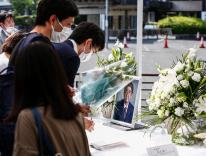God’s House on the Prairie
Thank you for Faith Bottum’s sketch of St. Anthony’s church in Hoven, South Dakota (“Prairie Romanesque,” September 23). What a beautifully written piece about a beautiful place!
A church like this is a powerful reminder that there is a difference between an assembly hall and the house of God. If the right building can transform a landscape, then we might say that a church building can baptize a landscape. If a church can be a “sermon in stone,” so can the interaction between that church and its surroundings. And it can be a lesson in identity and belonging, as well as a powerful invitation to enter into it—both the physical church and the church. May this bold, courageous building keep speaking!
Thomas Ederer
Walla Walla, Wash.
Specifics, Please
By alleging that Hillary Clinton is “morally unworthy of the office” and adding that “the evidence of the past four decades compels the judgment that she is unusually and offensively dishonest, unethical, and entitled” (“Neither of the Above,” September 23), Richard W. Garnett assumes a heavy burden of proof that he is unwilling to shoulder. Instead, he claims that “there should be no need…to set out the particulars.” It is shocking that a person occupying an endowed professorship in the law school of the University of Notre Dame would stoop to such a low level of sophistry. If Garnett has such evidence, let him present it in a well-reasoned argument, instead of begging the question. This is not an argument; it’s name-calling.
John Clendenning
Emeritus Professor of English
California State University, Northridge
Climate Change is a Life Issue
In his eloquent statement of why he “prefers not to” vote, Richard Garnett unfortunately does not consider the greatest prolife issue in the election: climate change. This is really an existential threat. Since one of the major candidates threatens to undo even the inadequate steps that have been taken to fight this catastrophe, we shouldn’t need Laudato si’ to convince us that we have an overwhelming obligation to vote to keep this person from becoming president.
William F. Reynolds
Belmont, Mass.
Just Peace, Again
Although the right to self-defense is a given, “A Church for Peace” (September 9) is an excellent presentation of conditions we hope for and aspire to. Just-war theory is just that, a theory. At its best, it seeks to limit the response to violence and to determine proportionate methods. But it can also be wishful thinking, a too-easy justification for war. Once a war begins, the passions aroused by fear, destruction, and death lead to open-ended carnage of the enemy in every way available. As we all know and regret, war is our ultimate folly.
The just-peace efforts are long overdue as every generation has acknowledged the need for better, deeper, and more integrated efforts to eliminate war as a “solution” to our differences. Hopefully, this endeavor for just peace will take root in our hearts and lead to all that is necessary to achieve it. Pope Paul VI stated the basic foundation to do this: “If we want peace, work for justice.” Like all hopes, aspirations, intentions, and goals this one will require a long process. It begins with the first step. It begins with me.
Mark Franceschini, OSM
Denver, Colo.
Please email comments to [email protected] and join the conversation on our Facebook page.
Share
Previous Story
Poem | 'That September and October'
Next Story
Paul Ryan, Laudato Si', and the Paris Climate Accord


